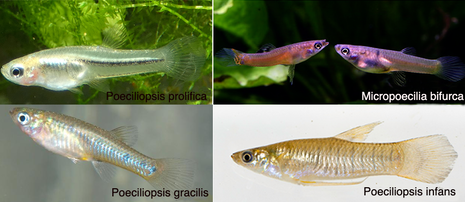
Animals exhibit various reproductive strategies from oviparity to viviparity, linked to the different levels of parental investment. Oviparity is a reproductive mode that females spawn eggs and offspring uptakes nutrition totally from yolk, while females with viviparity give birth to live young and there is different degrees of post-fertilization maternal provisioning in viviparous species. Placenta is a complex organ that mediates all physiological and endocrine interactions between mother and developing embryos. The evolution of placenta has been extensively investigated from histological, transcriptomic and genomic approaches.
Genomic imprinting is an epigenetic modification that inactivates one allele of a gene in a parent-of-origin manner. In mouse, more than 100 imprinted genes have been reported, and approximately one-quarter of these genes is specific to the placenta, which have important roles in determining placental phenotype. Imprinted genes not only regulate the growth of many different types of cells within the placenta to influence the area and passive diffusion properties of the maternal-fetal exchange surface, but also have abilities to affect the capacity of nutrient transferred to the placenta. However, genomic imprinting is restricted in therian mammals with placenta. Therefore, an independent origin of placenta is ideal to enhance our knowledge about if there is a coevolution between genomic imprinting and placental evolution.
 The developmental stages of Poeciliopsis prolifica
The developmental stages of Poeciliopsis prolifica
The fish family Poeciliidae is a widespread group of small neotropical fish that consist of approximately 220 species in 28 genera. The majority of fishes in Poeciliidae are lecithotrophic, which means that eggs provide all necessary nutrients to support the embryo through development to birth and embryos lose mass during development. Others are matrotrophy, where mothers provide nutrient through embryonic development and embryos gain weight during development. Placenta has independently evolved 7 times in the fish family Poecillidae. Thus, species within Poeciliidae offer us the opportunities to investigate the evolution of placenta.
In close collaboration with Dr. David Reznick, we employed several species (placental species and nonplacental species) within Poeciliidae to explore the mechanism of placental evolution using comparative and evolutionary genomic approaches to identify the structure and function of novel genes and understand the evolutionary process of placenta and test various hypothesis of coevolution of genomics imprinting and placenta by RNA sequencing and DNA methylome analyses.